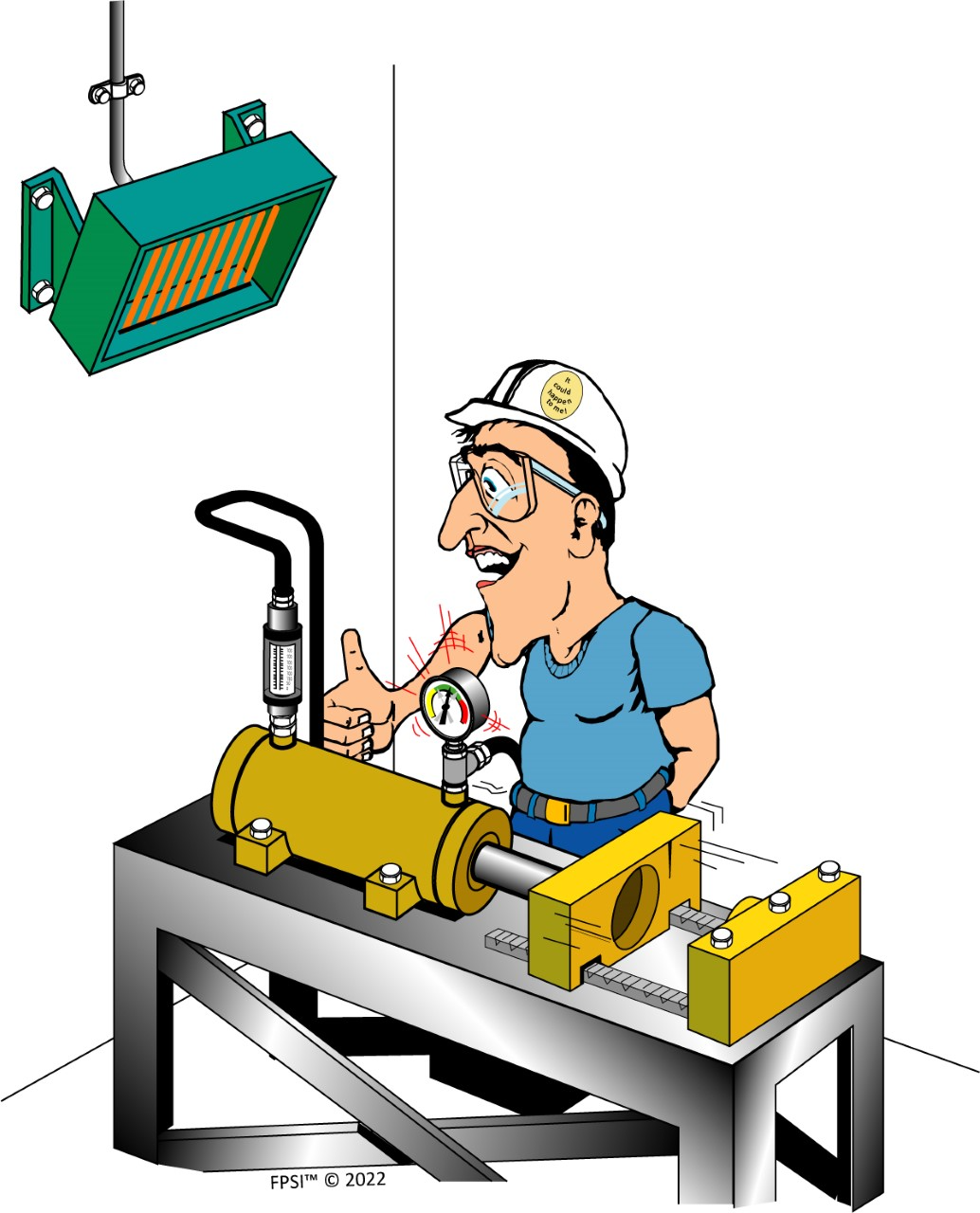Testing Hydraulic Cylinder Goes Wrong – Fire Erupts
The lack of standardized component test methods in the fluid power industry has left maintenance personnel devising their own techniques for testing hydraulic components. Therefore, it should come as no surprise that a maintenance technician, with no formal training in hydraulics, caused a fiery inferno that burned down an entire manufacturing plant simply by using a common method to test a hydraulic cylinder for piston seal leakage. Fortunately, the technician was not injured, but the devastation left about 45 people unemployed, and cost his employer $3.5 million.
The maintenance technician was troubleshooting the hydraulic system on a production machine. Through a series of trial-and-error checks, he apparently determined that the problem might be leakage across the piston seals in the cylinder, which was mounted on top of a machine and with its ports facing upward. A gas heater mounted in the rafters above the machine.
To determine if the piston seals were leaking, the technician decided he would remove the hose connected to the cap end of the cylinder. He would then apply full pressure to hose connected to the cylinder’s rod end. Fluid flowing from the cap-end port would indicate that the piston seals were, indeed, leaking.
He fully retracted the piston rod and removed the hose connection, leaving the cylinder port open to atmosphere. He then asked the machine operator to apply full pressure to the rod-end port while he observed if any oil discharged from the open port. When the operator activated the directional control valve, a jet of oil sprayed from the open port, and up into the rafters, eventually dousing the gas heater.
Within a few seconds, the heater erupted into a fireball. The technician and nearby co-workers, tried to extinguish the flames with portable fire extinguishers. Failing this, they called the fire department. By the time the fire department arrived, the entire structure was engulfed in flames.
Results of the ensuing investigation revealed that the technician was not properly trained to troubleshoot and test hydraulic components, nor did he have the proper equipment for doing so. Furthermore, his supervisor didn’t even check to see if the technician was qualified to troubleshoot and test hydraulic cylinders. The method the technician used to test the cylinders was routinely used in the plant.
The accident could have been avoided if the technician had been properly trained, including safety training specific to hydraulics. Because the manager viewed the technician as “mechanically inclined,” he assumed he had a “natural ability” to troubleshoot, service, and repair hydraulic systems.
The technician should have been provided the proper tools for the job, including flow meters, pressure gauges, temperature gauges, and any other special tools required for working on hydraulics.
The safe and effective way to test hydraulic cylinders is to use a flow meter and a pressure gauge. The flow meter indicates when oil is bypassing. More importantly, it keeps the oil where it belongs — safely within the confines of the hydraulic lines.
This accident could have been prevented with a few hours of training and a flow meter costing a few hundred bucks. The oil striking the heater was unfortunate, but the consequences would have been much worse had the oil instead struck a person. This could’ve caused a serious injury or even death.
This information was provided by Rory McLaren president, Fluid Power Training Institute, Salt Lake City. For more information, call (801) 908-5456, email info@fpti.org, or visit www.fpti.org.
By: Alan Hitchcox
After serving as a vehicle mechanic in the US Army, Alan attended college full time to earn a Bachelor of Science while also working full time for a power transmission and fluid power distributor. He then became a technical editor and wrote or edited hundreds of technical articles for 38 years, with the last 32 on Hydraulics & Pneumatics magazine before becoming semi-retired in 2020.












Leave a Reply
You must be logged in to post a comment.